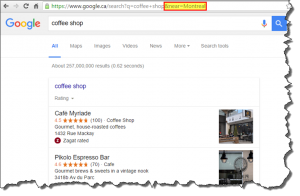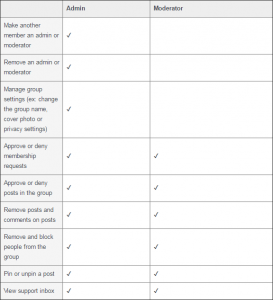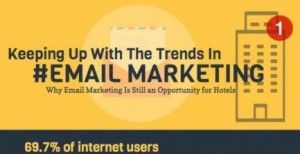Choosing between composable vs. packaged CDP is not straightforward. Here are key considerations to know before making a decision.
“Composable CDP is not a thing. Composable architecture is,” my colleague Craig Howard previously penned in an internal missive. He explained that customer data platforms (CDPs) gained traction when organizations could not implement their own cloud-native customer data store and could purchase a commercial, off-the-shelf solution — a “packaged” CDP — that could help them realize the benefits of cloud technologies by managing their customer data.
But things have changed more recently:
- IT organizations have evolved and built skills around cloud technologies.
- Data integration needs have often surpassed the CDP capabilities. Many CDPs struggle to manage complex data structures or handle answering complex questions about the data.
- Policies and a patchwork of global laws have introduced complexity around privacy, consent and data residency.
Brands are now creating their single customer view with cloud-native identity resolution, data integration and data storage capabilities. CDPs are adjusting to this paradigm, the data clouds and the resulting composable architectural pattern, calling themselves a “composable CDP.”
Packaged vs. composable
A composable CDP is based on an architecture anchored on a cloud data store for customer data. In composable, the CDP becomes an orchestration platform — managing audiences and journeys and activating the customer data.
Yet, deciding to go with composable vs. packaged CDP is not straightforward. First, if you’re shopping for either, your head is in the right place. Activating first-party data across channels is the future. If your decision is composable vs. standalone, there is much to unpack.
Convergence
In 2021, one had to choose between reverse ETL (composable) or CDP. Today, that choice is not clear-cut. Many CDPs and marketing technologies can query a database.
For example, Lytics, ActionIQ, mParticle, Blueshift and others have made strides toward connecting natively to a client data warehouse and the valuable data that lives in it. One can effectively practice composable with some CDPs previously considered packaged.
Implementation
It sounds simple — slap a reverse ETL over an existing data warehouse. Yes, “composable” may be easier to implement. Time to value is typically faster if you have the following:
- All key data streams easily accessible in your data warehouse.
- Identity resolution strategy worked out.
- An engaged analytics or enterprise data team.
Thus, a composable CDP pushes dependencies to the client data warehouse. A CDP may provide comparable or superior time to value if you do not meet the above criteria. For example, an identity resolution strategy is established during onboarding with many packaged CDPs.
Additionally, common connectors for email platforms and other martech may provide the client with datasets it hadn’t previously stored. This new data and the identity resolution strategy give many clients a “customer 360” as a value-add.
Composable vs. packaged CDP use cases
The use cases achieved in a composable approach do not fundamentally differ from packaged CDP. There are exceptions — CDPs such as Lytics and BlueConic offer simple site personalization.
If the data underlying the segment is reliable for marketing purposes and the identity resolution strategy permits activation in a given channel, use cases are limited only by the capabilities of the team using the tool. However, packaged CDPs may have built-in machine learning (ML), reporting and support for real-time that composable practitioners may need to solve for separately.
Identity resolution
A composable solution will not create identity resolution. Composable architectures rely upon pre-existing join keys, cloud-native identity resolution for disparate data sets or a pre-existing customer table with all relevant segmentation criteria.
CDPs can work with a pre-existing identity resolution strategy, similar to composable architectures — or they can create an identity resolution strategy for the client as part of their implementation. Often, there is a hybrid approach where a CDP utilizes the client’s pre-existing identity resolution strategy and then maps new channels and data streams into that identity resolution strategy.
Segmentation
Many packed CDPs offer no-SQL front ends, and composable reverse ETL solutions have made progress on this front. Likewise, not all CDPs are created equally and some place more technical burden on the end user.
Some CDPs need to flatten or map data to limit complex joins. This is to limit the dimensionality of the data and provide real-time responses.
The real-time nature of this architecture may be an advantage to some. However, it places real limitations on the ability to ask complex questions of the data. If real-time is important, packaged CDPs may have an advantage. If complex questions and less onerous data mapping in implementation are critical, composable may work better for you.
Data governance
Complex legal requirements for consent, data storage, data residency and rights to access/deletion are top of mind for many decision-makers in the composable architecture vs. packaged CDP decision. In this area, composable enjoys an advantage.
Composable puts the data warehouse at the center of the marketing universe. Cloud data warehouses offer flexible controls for consent and data residency. Composable solutions can work within a pre-existing governance framework, including multi-region support, data expiration and column-level protection.
Packaged CDPs often recreate key aspects of customer data in a CDP-managed environment. This creates process issues for things like GDPR- and CCPA-related requests. They are also forced to work with client-provided consent attributes or integrate with third-party consent platforms. Some CDPs try to mitigate this by installing their CDP “on-prem.”
Time to value
Time to value varies all too widely by client. As mentioned above, theoretically, time to value is faster with composable if certain organizational criteria are met. If those criteria are not met, the packaged CDP has some structural advantages.
However, CDPs cannot always claim success. We’ve seen time to value in as little as 30 days and we’ve unfortunately been called in to rescue multi-year efforts with little value provided. Though, if you have a multi-year issue with no success, the issue is probably not the technology as much as your use case strategy, your process to adopt the new technology or lack of skills, availability or continuity in your staff.
Data science and machine learning
The composable approach relies upon an enterprise bringing their own intelligence or a best-of-breed solution to the data set. Many CDPs offer out-of-the-box data science. In our experience, CDP-provided capabilities are limited to the team using the platform. If the team is advanced, they may be able to extract value from data science features.
We believe data science should be well-ingrained inside a marketing operation. If your team hasn’t found utility in the ML capabilities they have, you have the wrong team or the wrong process. If your team doesn’t have ML capabilities, work with an expert who can help you modernize your marketing processes.
Key questions to consider before going with composable CDP
The decision to go composable or packaged CDP is highly nuanced. The distinctions overlap and there are specific dependencies of a brand’s data warehouse, complementing technologies (BI, machine learning, etc., etc.) and desired use cases.
Before deciding on an approach, brands should ask themselves some of the following questions:
- What use cases am I trying to solve for? Considerations around the deletion of third-party cookies, the need for real-time use cases and connectivity to the existing martech stack must be considered.
- Do I have all the key data already resident in my data warehouse? For example, do I have my email, website and key data from stores or other owned channels available at a customer level? Can I join these data sets together for a reasonably-reliable customer view already?
- How mature is my reporting and analytics capability? Can they easily support reporting of the audiences I intend to build, use cases I intend to deploy and ROI associated with these efforts?
- Do I have the tooling needed to support ML-based decisioning in my audiences?
When we work with companies deploying a CDP, our team has generally made an organizational commitment to deploy first-party data at scale. This inherent commitment has helped the velocity and success of CDP deployments.
It’s early to tell how reverse ETL solutions will impact first-party customer data deployment at scale. However, the future is bright for rapid time-to-value applications and the ability to allow for data residency and privacy concerns.
The post Composable CDPs: How do they differ from packaged solutions? appeared first on MarTech.
MarTech(4)








